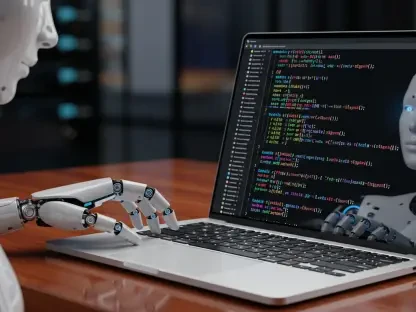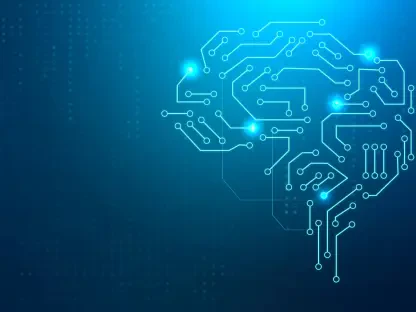Blockchain technology has quickly shifted from a niche interest to a critical component of modern digital infrastructure. Developers who transition into blockchain development find themselves navigating both rewarding opportunities and significant challenges. This article explores these dynamics, guiding you through the main aspects blockchain developers contend with today.
Blockchain technology is transformative, with implications far beyond currencies like Bitcoin and Ethereum. It’s a decentralized ledger system promising transparency, security, and reliability across various applications. However, the journey into blockchain development comes with its share of hurdles, from understanding decentralization to managing the immutability of smart contracts.
The Financial Appeal
Blockchain development offers lucrative financial incentives. Developers often command higher salaries, given the scarcity of skilled professionals in this space. Startups and established firms alike are willing to pay a premium for expertise in blockchain technology, recognizing its potential to revolutionize industries from finance to supply chain management. Yet, it’s vital for developers to approach blockchain with more than just an eye on financial gain; understanding the core technology proves critical for long-term success.
The high compensation can be distracting, as it sometimes shifts focus onto cryptocurrency investments rather than the technology itself. Blockchain’s true potential lies beyond speculative trading, in solving real-world problems and creating new opportunities for innovation.
Moreover, the financial incentives are not just about base salaries. Developers often find themselves enticed by bonuses, stock options, and other forms of compensation tied directly to the success of blockchain projects. These can amplify their earnings significantly but can also divert attention from the intrinsic technical challenges and opportunities that blockchain technology offers. To truly benefit from the financial rewards of blockchain development, a balanced approach is crucial—one that balances the lucrative opportunities with a genuine curiosity and appreciation for the technology itself.
Key Aspects of Blockchain Development
Decentralization
Decentralization forms the backbone of blockchain technology. Traditional systems like banks are centralized, meaning a single entity controls and can manipulate the data. In contrast, blockchain employs a decentralized network of nodes that verify and record transactions, ensuring no singular control or alteration. This decentralization facilitates a robust and tamper-resistant transaction process, gaining the trust of users globally. However, implementing and maintaining a decentralized network requires a comprehensive understanding of distributed systems, far more complex than centralized systems.
Maintaining this level of decentralization comes with its own set of intricacies. For one, each node in the network must reach consensus—a collective agreement on the validity of transactions that takes place through mechanisms like Proof of Work or Proof of Stake. These consensus protocols require a deep understanding of cryptographic principles and distributed computing. Additionally, developers must account for potential issues like network latency, node failures, and synchronization problems. The decentralized nature also leads to computational inefficiencies, demanding innovative solutions to optimize performance without compromising the decentralized architecture’s integrity.
Smart Contracts
Smart contracts are self-executing contracts with terms directly written into code, most commonly using Solidity on Ethereum-based blockchains. They automate agreement enforcement and verification without the need for intermediaries, ensuring decentralized trust and transparency. Yet, crafting these smart contracts necessitates a strong proficiency in coding and a rigorous testing process. Any bug or vulnerability in the contract, once deployed, becomes immutable. This immutability, while a strength, also poses risks, making thorough testing and third-party audits indispensable.
The development of smart contracts is akin to writing legal agreements in code. Therefore, developers need to understand not just programming but also the domain-specific logic that the contract is intended to enforce. For instance, a smart contract designed for a decentralized finance platform has to account for varied elements like interest calculations, collateral management, and automated liquidation processes. Because errors in smart contracts are irrevocable, extensive pre-launch testing is necessary. Developers often employ testnets and mock scenarios to ensure the contract behaves as intended. Furthermore, third-party audits add an extra layer of scrutiny, essential for identifying potential vulnerabilities that could be exploited once the code is live.
Challenges in Blockchain Development
Financial Costs
Every action on a blockchain has a cost, unlike traditional backend systems. These costs, paid in the native currency of the blockchain (e.g., ETH for Ethereum), can add up quickly, making cost management a critical skill for blockchain developers. For example, storing data on a blockchain is considerably more expensive compared to traditional databases. Developers must devise efficient storage strategies to keep transactional costs manageable while maintaining the integrity and functionality of their applications.
This financial burden forces developers to think creatively about how they build and deploy their applications. Data minimization techniques become crucial, as does the bundling of multiple transactions into single, more cost-effective operations. Additionally, developers often utilize off-chain storage solutions for data that doesn’t need to be on the blockchain, thereby reducing costs. Layer 2 solutions, such as state channels and sidechains, offer alternative methods to handle transactions more efficiently and economically. Managing costs effectively is as much a part of blockchain development as writing the actual code, requiring developers to continually balance performance, cost, and functionality.
Data Storage
Blockchain’s data storage capabilities are rudimentary compared to robust traditional databases like PostgreSQL or MySQL. Typically limited to key-value pairs, the high costs associated with storage necessitate innovative strategies to optimize data usage. This limitation involves an additional layer of complexity, pushing developers to balance efficient data storage with the blockchain’s inherent overheads. As developers navigate these constraints, they often need to unlearn conventional database concepts and adapt to blockchain’s unique paradigms.
Even more so, maintaining data integrity while optimizing for storage costs can be a challenging balancing act. Techniques like sharding or incorporating off-chain data solutions become critical in maintaining both data integrity and system efficiency. Developers often leverage InterPlanetary File System (IPFS) or similar decentralized file storage systems to handle large data sets. These external systems store data in a distributed manner and ensure easy retrieval yet incur significantly lesser costs than what would be required to store the same amount of data directly on the blockchain. Integrating these off-chain storage solutions with on-chain verification mechanisms continues to be a significant area of focus within blockchain development.
Immutable Deployments
Once a smart contract is deployed on the blockchain, it cannot be altered or deleted. This characteristic ensures integrity but demands impeccable precision in contract development. Any errors remain permanent, highlighting the significance of extensive testing and preventative measures. Developers must adopt a comprehensive auditing process and leverage rigorous test environments to identify and rectify potential flaws. The immutable nature of smart contracts necessitates a proactive and meticulous approach to development.
This rigor often translates to a steep learning curve for developers who are accustomed to more flexible backend environments. Implementing a robust development pipeline that includes unit tests, integration tests, and security audits becomes essential. Additionally, the use of formal verification methods can provide mathematical assurances about the contract’s behavior, although these techniques are not yet commonplace due to their complexity. Ultimately, the immutability of blockchain deployments emphasizes the importance of thorough planning and exhaustive pre-release testing. This careful approach contrasts sharply with the “move fast and break things” philosophy that is prevalent in traditional software development, highlighting the unique challenges blockchain developers must overcome.
Logging and Debugging
Traditional debugging and logging methods fall short in blockchain development due to the decentralized and immutable nature of the technology. Developers rely on events within smart contracts to monitor and validate executed transactions, which often proves cumbersome. This constraint forces developers to rethink their approach to problem-solving and debugging. Tools and strategies that work seamlessly in legacy systems need overhauling to fit into the blockchain context, requiring continuous learning and adaptation.
To handle these limitations, developers often use specialized blockchain analytics and monitoring tools like Etherscan for Ethereum-based blockchains. These tools provide visibility into transaction histories and contract interactions but may lack the granularity offered by traditional debugging environments. Log management becomes a decentralized effort, with developers codifying specific events in their smart contracts to serve as log entries. This methodology ensures some level of interpretability but is far from perfect. Identifying and fixing issues in blockchain applications can be an arduous, time-consuming task, underscoring the need for meticulous coding practices from the outset. The decentralized and immutable qualities of blockchain make real-time debugging almost impossible, pushing developers towards more preventive measures.
External Calls
Smart contracts’ inability to make direct external web service calls presents another challenge. Oracles serve as intermediaries to fetch and integrate external data into the blockchain, creating a secure yet indirect method of accessing needed information. Oracles bridge the gap but come with their own sets of limitations and security concerns. Establishing secure, reliable, and efficient communication between smart contracts and external systems is an ongoing challenge that developers must navigate.
The reliance on oracles introduces a third-party dependency, which can be a single point of failure and undermine the decentralized ethos of blockchain. Ensuring the data provided by oracles is accurate and secure remains a persistent challenge, necessitating robust mechanisms to verify and validate this external data. Solutions such as decentralized oracle networks attempt to mitigate these issues, distributing the trust among multiple nodes. Despite these advancements, integrating smart contracts with external data sources continues to be a significant hurdle, requiring a blend of cryptographic techniques and secure software development practices to manage effectively.
Underlying Trends and Consensus
Decentralization as a Cornerstone
Decentralization remains an unwavering pillar in blockchain development. Removing central authority assures a tamper-proof and transparent network, aligning with the foundational principles of the technology. Any yield to centralization is viewed as a compromise of blockchain’s core values, thus maintaining decentralization is a shared industry aim. The emphasis on decentralization extends beyond just the technical architecture to encompass community governance and decision-making processes.
This insistence on decentralization has led to innovative governance models like Decentralized Autonomous Organizations (DAOs), where stakeholders collectively make decisions about the network’s development. The ethos of decentralization also influences how updates and improvements are proposed and implemented, requiring broad consensus from network participants. This community-driven approach adds another layer of complexity to blockchain development, demanding not only technical skills but also a deep understanding of decentralized governance models. While challenging, these governance structures ensure that the technology remains true to its foundational principles, fostering a more equitable and transparent digital ecosystem.
Thorough Testing and Audits
Blockchain technology has rapidly evolved from a niche topic to a cornerstone of today’s digital infrastructure. Developers who pivot to blockchain development encounter a landscape rich with both promising opportunities and formidable challenges. This article delves into these dynamics, offering insights into key aspects that blockchain developers face today.
Blockchain isn’t just about cryptocurrencies like Bitcoin and Ethereum; it holds transformative potential across numerous sectors. Acting as a decentralized ledger, blockchain promises unparalleled transparency, security, and reliability for various applications, from supply chain management to healthcare.
However, the journey into blockchain development is not without its obstacles. Developers must grasp complex concepts such as decentralization, which distributes control across a network, and the immutability of smart contracts, which are self-executing agreements coded directly onto the blockchain. Understanding these elements is crucial for harnessing the full power of blockchain technology.
Navigating the blockchain landscape also involves staying current with its rapid advancements and diversifying applications. From enterprise-level blockchain solutions to decentralized applications (dApps), the scope is wide and continually expanding. Despite the challenges, the potential for innovation makes blockchain development a highly rewarding field, promising to redefine how data and transactions are managed in the digital age.









